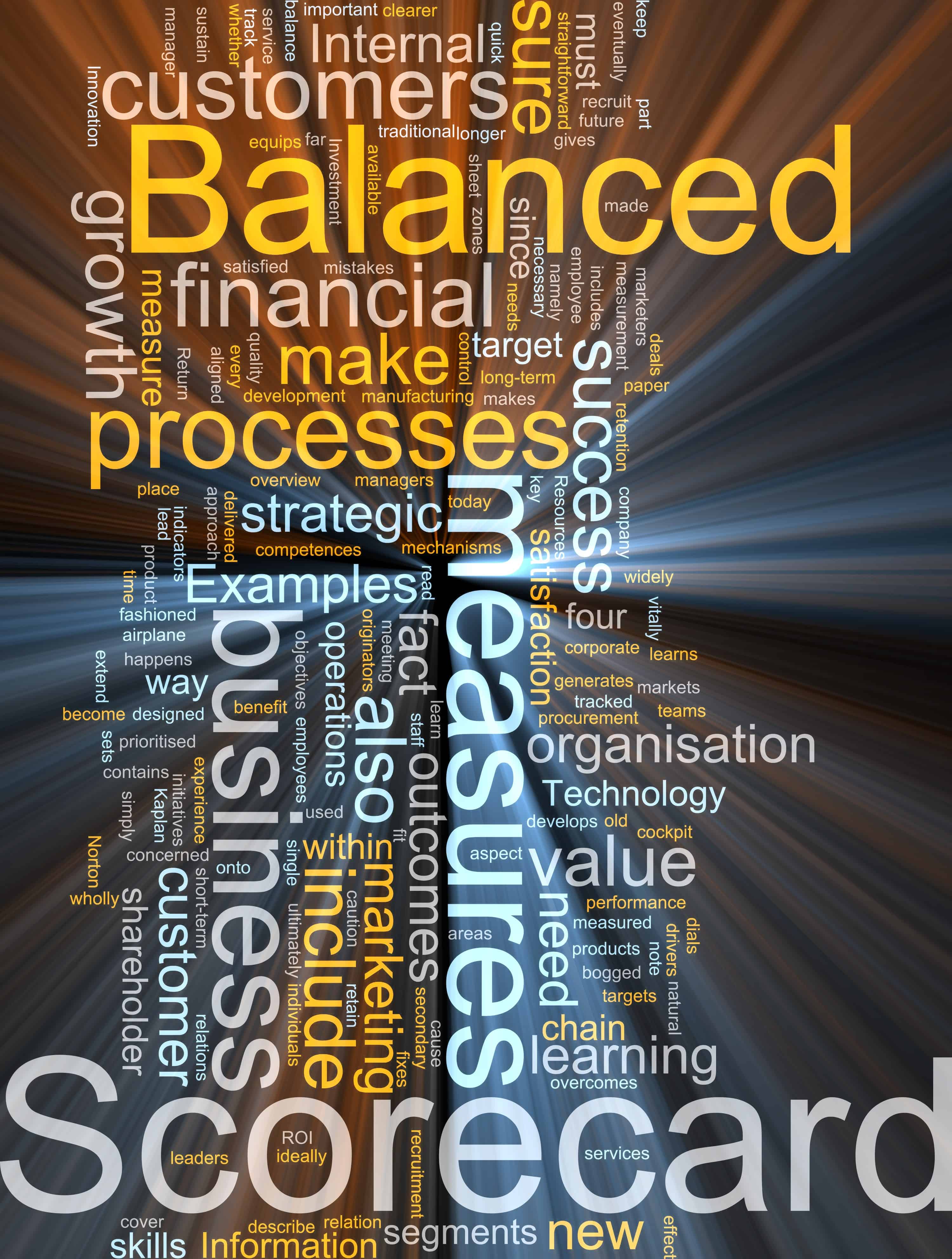Description
Balanced Scorecard with 8 Dimensions of Excellence
A balanced scorecard is a management decision tool. It is intended to be a framework for linking strategy with operational performance measures. In practice, it is an integrated report, usually showing diverse areas of performance an organization most values. This is a departure from traditional performance measurement tools such as financial reports, sales reports, production reports and customer survey reports. Each of those reports focuses on performance along a single dimension. This is akin to the blind man understanding the attributes of an elephant in terms of the trunk or tail he is holding.
The term “balance” suggests that objectives and measures along different dimensions, assembled together on one sheet or screen, offer a multi-dimensional and qualitatively better view of organizational success. As popularized by Kaplan and Norton, the right measures address performance regarding the management of finances, processes, customers and employee development. A well-designed scorecard should not exceed twenty measures, all connected to strategic objectives. It helps management (if not line employees) make good, fast decisions on what to improve or celebrate. The purpose is to understand what the whole elephant looks like so you can put food where its mouth is.
Sounds like Common Sense 101. So what is wrong with this picture? In theory, nothing. In practice, many organizations are still not seeing the whole elephant. Like most organizational change models, evolutionary improvement has certainly occurred. But it remains incomplete. For example, managing customers (via our positioning, image, crisis handling and so on) is not synonymous with satisfying them. Scorecards today often focus entirely on subjects of internal interest. The customers’ interest areas continue to be inadequately integrated into the grand scheme.
The popularity of scorecards reflects a general growth of interest in performance measurement and improvement tools. This is a positive trend. The better integrated our measures are, the more holistic our improvement efforts tend to be. Let’s look at how we can enhance the use of measures for the benefit of both customers and the enterprise. First, examine the three cases on measurement practices to avoid.
Case 1: Customers First?
Leaders of a Fortune 100 company had frequently stated, “Customers are our first priority.” They had created a scorecard intended to focus everyone on 27 objectives and performance measures organized under four critical categories, including “customer/consumer”. Senior management was surprised to discover (with outside help) that only three (3) of the 27 objectives had anything to do with customers or their priorities. How could customers really be priority number one? How balanced was the scorecard? The use of scorecards, sometimes called dashboards when the focus is strictly on the measures rather than the objectives, is growing. But here is an important principle: Studying the dashboard without also looking out the windshield can cause accidents.
Case 2: Measured Confusion
Senior management wanted to establish an improvement initiative. They had written a strategic plan. It identified key barriers to success and over 30 activities due by specific dates. Employee morale and customer satisfaction were identified as key areas to improve.
An outside consultant was asked to review the plan. He noted that there were few stated outcomes or numerical improvement objectives related to the top priorities. The CEO responded that she was confident their new training program and other activities would lead to good results. And anyway, since outcomes are not directly controllable, she saw no reason to commit to specific measures of improvement. She decided that only measuring internal processes would be sufficient.
Eighteen months later, the training programs and other scheduled activities were completed. Improvement in employee morale and customer satisfaction remained elusive.
Case 3: Same Old Tired Excuses
It is becoming increasingly common to see organizations conduct customer satisfaction surveys by phone or form.
One of the highest priorities business travelers have is a good night’s sleep. Yet virtually no hotels include any questions about this on their surveys. They may ask about the quality of the restaurant’s meals, the promptness of the check-in and check-out processes and the helpfulness of front desk staff. But nothing about sleep.
When asked about this disconnect, management of one hotel explained that their survey was designed by a “self-directed” team. The questions asked were ones the team wanted to have answers for. No customers were on the team nor involved in prioritizing the topics or designing the instrument. Its intent was to enable employee recognition. A laudable purpose, but employee satisfaction should not be confused with customer satisfaction.
Balance What Is Valued – Balanced Scorecard with 8 Dimensions of Excellence
A truly balanced scorecard, in terms of both organization and customer priorities, is possible to create. To do so requires that categories of measures reflect the key values of both parties.
Please order to download the complete article by Robin Lawton.
For More Information on your Balanced Scorecard with 8 Dimensions of Excellence



